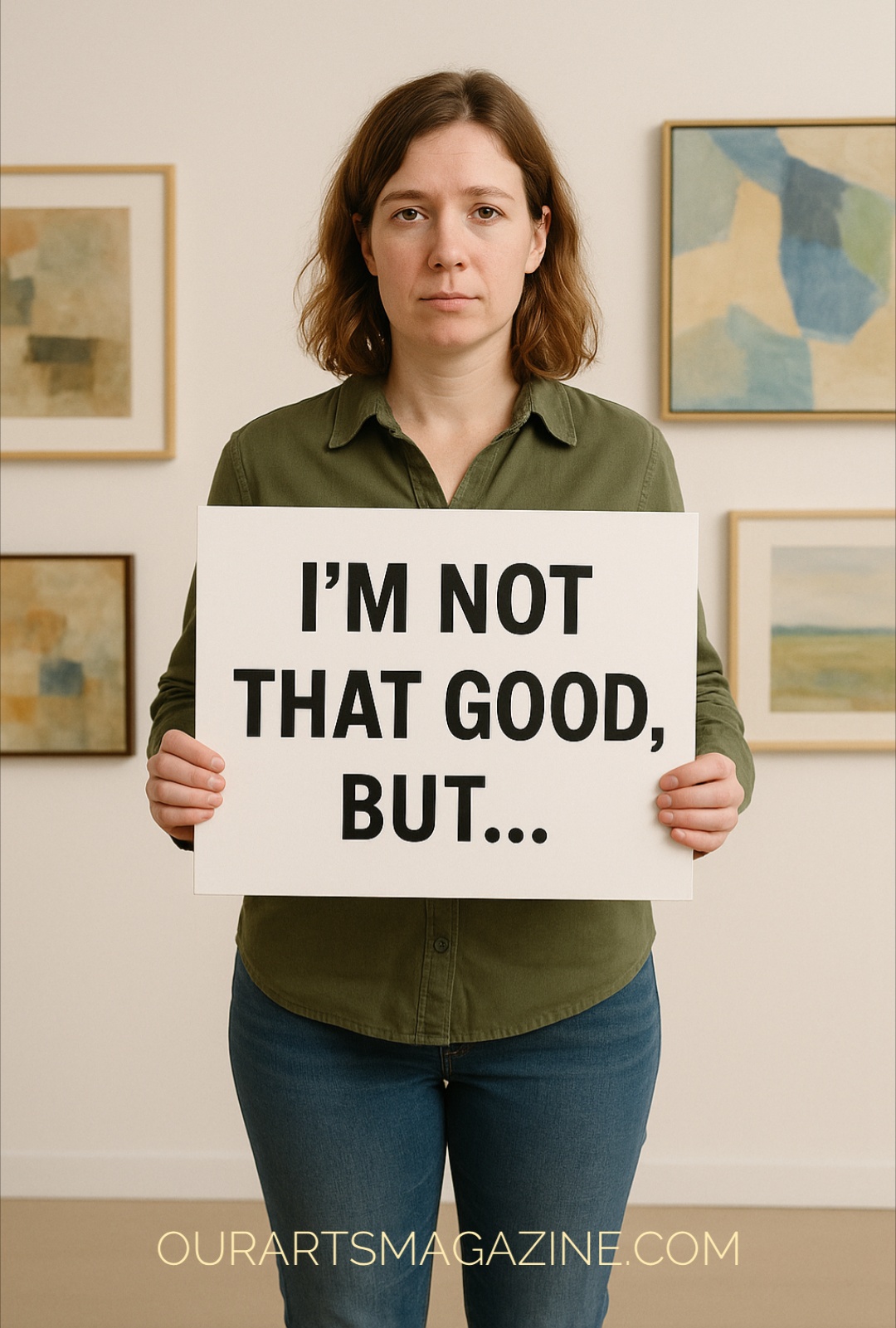From a question sent in by Rudy Umans
—————–
Art Is Not Always Enough
It’s a painful truth, but one that must be faced: creating good work is not always enough. Not in the commercial world. Whether approaching a gallery, pitching a book to a publisher, applying for a grant, or simply uploading artwork to an online shop, the artist must now wear another hat entirely—that of the marketer.
The problem is, most artists didn’t get into art to become marketers. Many are introverted by nature, reflective, quiet, and highly self-critical. Their art speaks for them. It is them, in many ways. To speak too confidently of their own abilities or creations often feels disingenuous, even arrogant. And yet, this self-effacing approach can prove a major hurdle when it comes to convincing someone else—whether a collector, curator, or client—to invest.
The Buyer’s Perspective
Put yourself in the shoes of someone purchasing artwork. Imagine they’re in conversation with two artists. One is quietly passionate, softly spoken, but reluctant to say much about their own work. The other is engaged, articulate, and able to express clearly what their art means, why they created it, and what sets it apart. Which artist feels more trustworthy? More professional? More likely to follow through?
It isn’t always about ego—it’s about reliability. Confidence in your own work sends a signal that you believe in what you’re doing and that others can, too. Hesitation, on the other hand, may come across as doubt, even if it’s just the result of humility.
Balancing Humility with Professionalism
The good news is that this is not an either/or situation. You do not have to become brash, boastful, or insincere to present yourself well. Here are some ways to find the balance:
1. Speak from the Work, Not About Yourself
Instead of saying, “I’m a great artist,” talk about the process or the intention behind your pieces. For example:
This series explores the connection between memory and place. I used layered textures to mimic how memories fade and distort over time.
2. Reframe ‘Selling’ as Storytelling
People love stories. If you view each conversation, bio, or pitch as a chance to share your journey or your inspiration, it becomes much easier to speak. Telling someone why you paint forests, why you’re drawn to monochrome, or what your first sketchbook meant to you—these are compelling human details. They sell you, yes—but authentically.
3. Let Others Say the Bold Stuff
If you struggle with self-praise, use testimonials. A short quote from a collector, mentor, or reviewer can make a strong impact. When someone else says your work moved them, or that you were a dream to work with, it allows you to share praise without having to deliver it yourself.
4. Practise Talking About Your Work
Write a short description of your art style. Record yourself explaining one piece. Practise a two-minute introduction. Confidence grows with repetition. The more you hear yourself speak calmly and clearly about your work, the more natural it becomes.
5. Create a Professional Online Presence
Let your website, portfolio, or social media do some of the talking. A clean, thoughtfully written ‘About’ section, consistent branding, and well-presented images go a long way. If your online presence looks professional, it reinforces your seriousness about your craft, even if you’re modest in person.
Never Call Yourself an Amateur
There is one misstep far too many artists make—often innocently, and often out of modesty—and that is using disclaimers like I’m just a hobbyist
, Still learning
, Not a professional
, or worst of all, I’m not really an artist
in their business biographies or artist statements.
Please, don’t do this.
Even if you are at the very start of your journey—even if you do consider yourself still learning (and let’s be honest, aren’t we all?)—do not undermine your own voice before it’s even had a chance to speak.
These disclaimers do not come across as humble. They come across as insecure. And to a prospective buyer, gallery, or patron, they suggest unreliability, lack of confidence, or worse, a lack of seriousness. Why would someone invest their time or money in you if you clearly don’t believe in your own worth?
Instead, describe your work factually, warmly, and with quiet confidence. For example:
I’m a self-taught artist exploring light and landscape through watercolours.
My work focuses on wildlife and texture, influenced by walks in the Yorkshire Dales.
These are far more powerful than: I’m only a beginner but…
Being modest is admirable. But underselling yourself isn’t humility—it’s self-sabotage.
Self-Belief Isn’t Arrogance
There is a crucial difference between arrogance and self-belief. Arrogance demands validation. Self-belief quietly knows its worth. When you speak with genuine passion, honesty, and care, you are not being boastful—you are being brave.
And if you’re seeking representation, commissions, or sales, you owe it to yourself and your potential buyers to be visible, understandable, and confident. Not over-confident. Not salesy. Just sure enough to say, This work matters to me. I hope it might matter to you, too.
Because at the end of the day, art is connection. And connection requires a voice.
